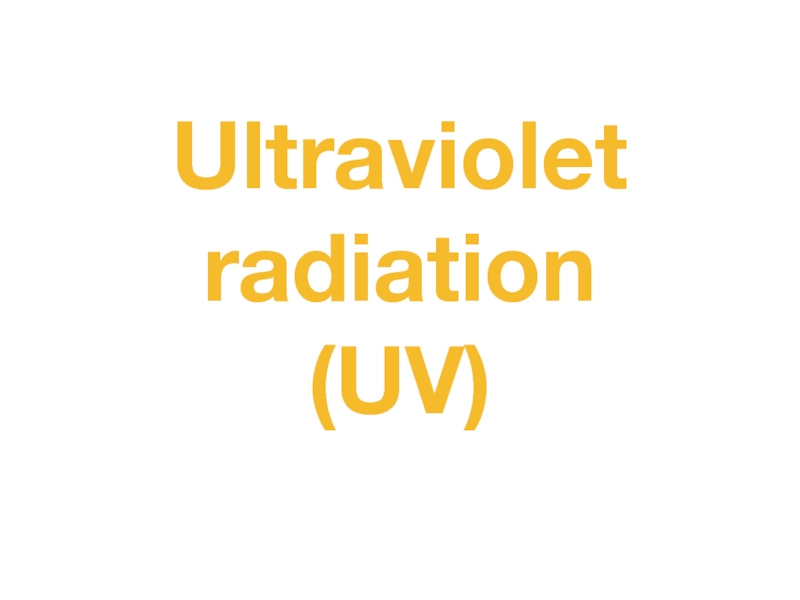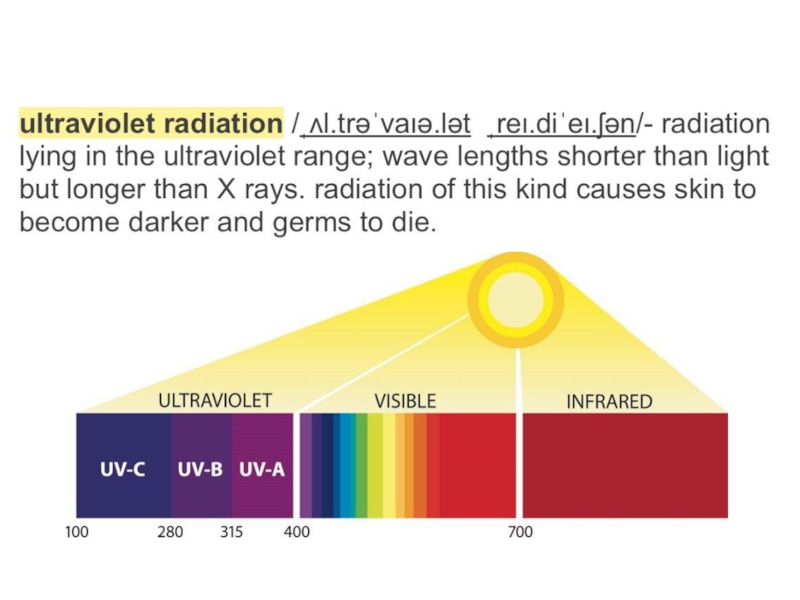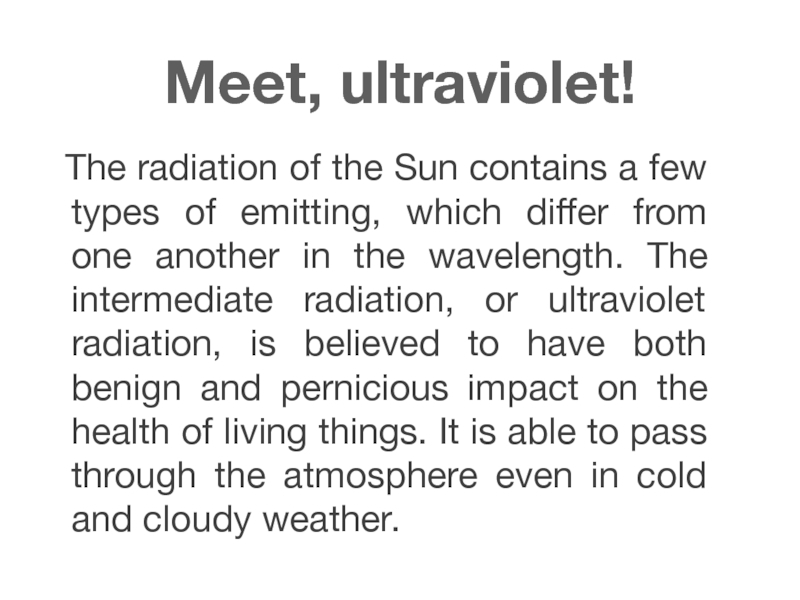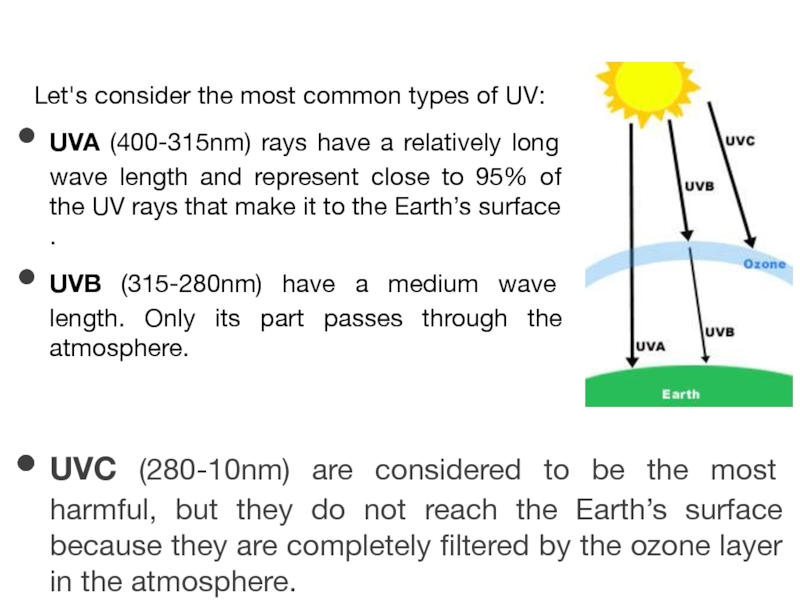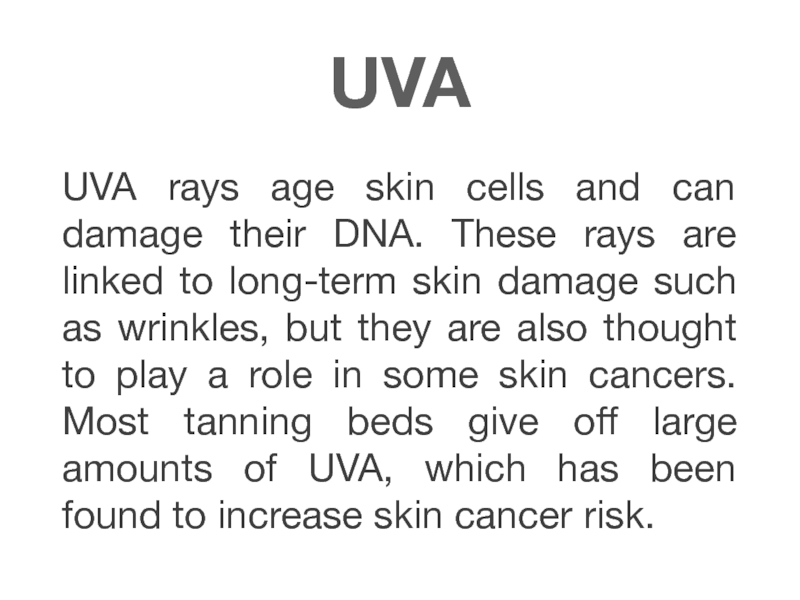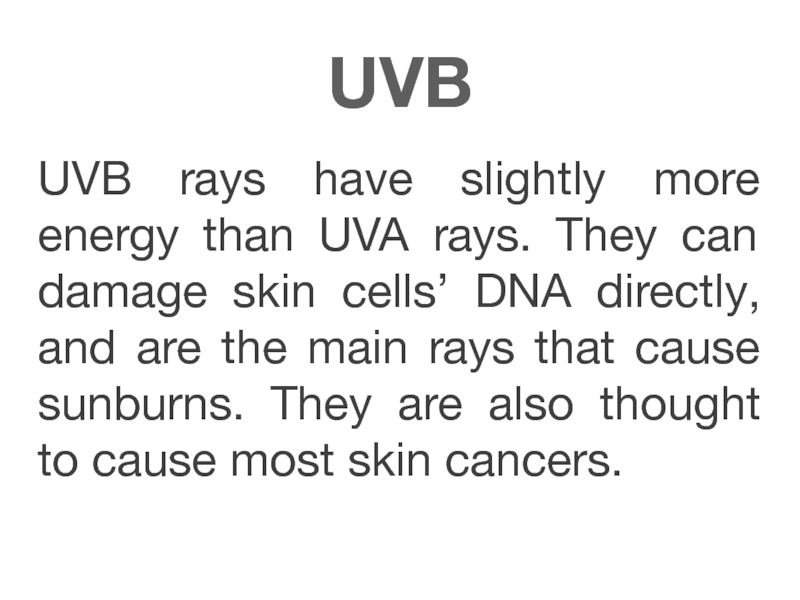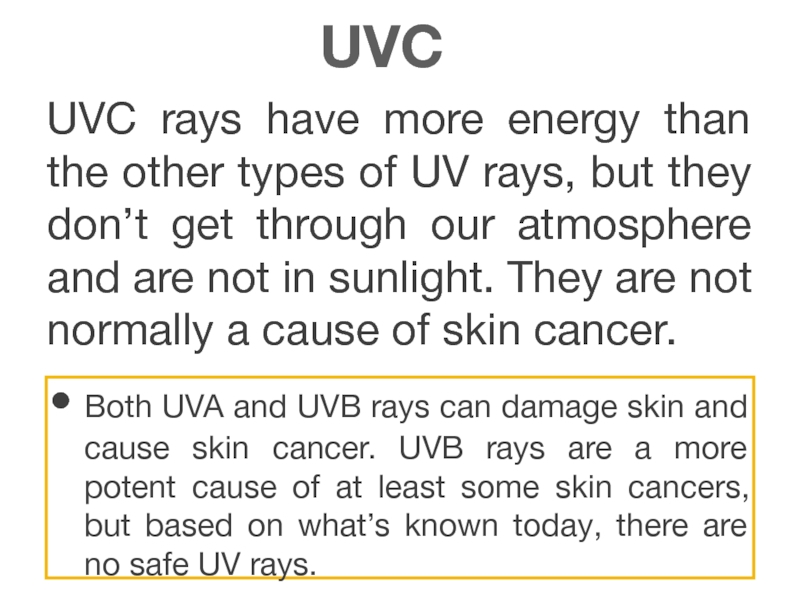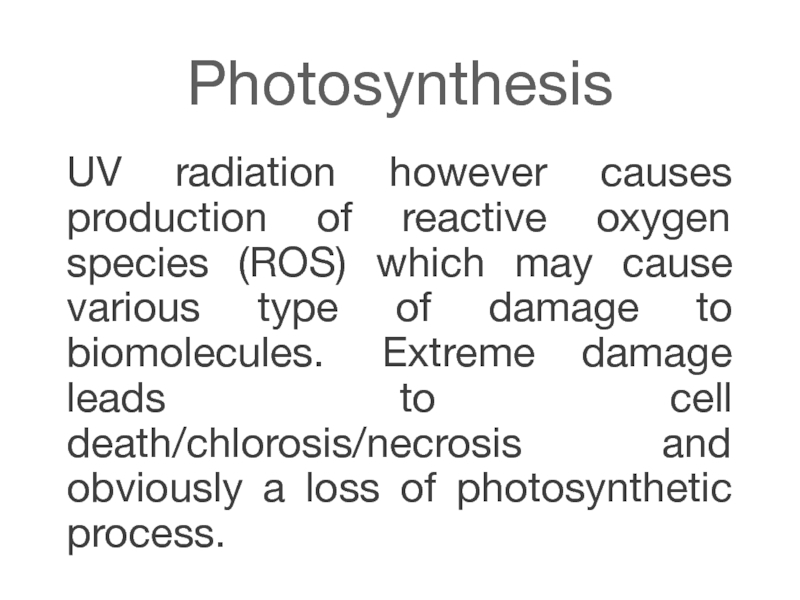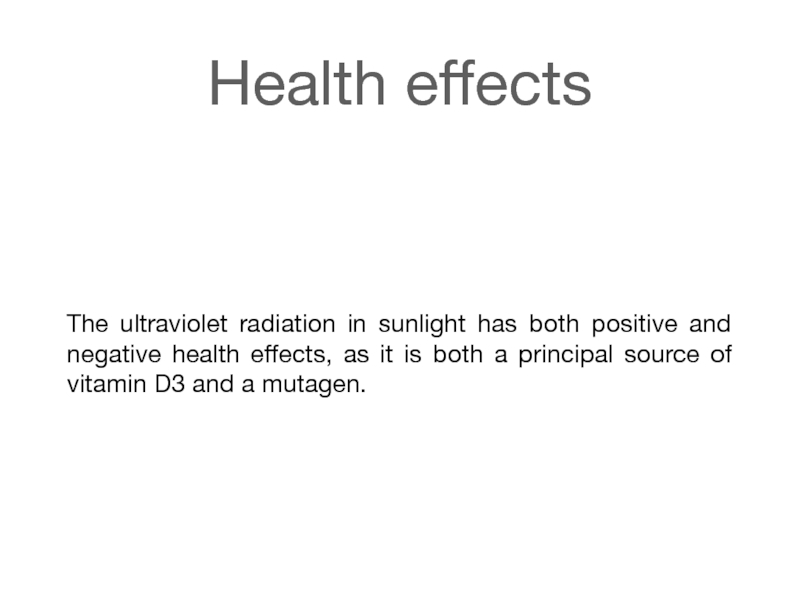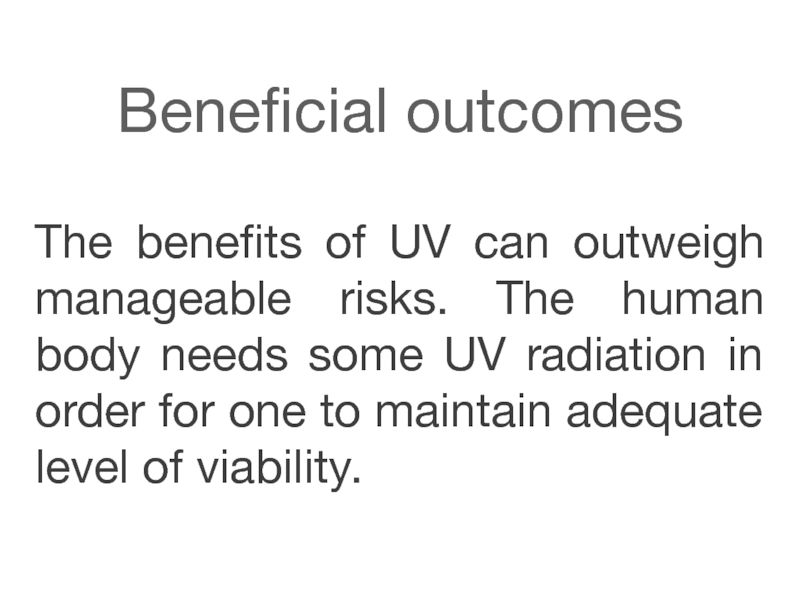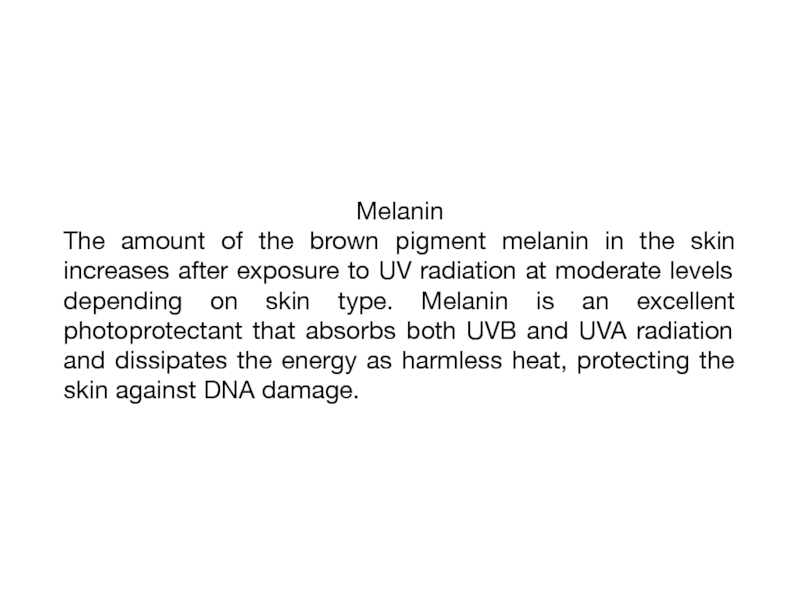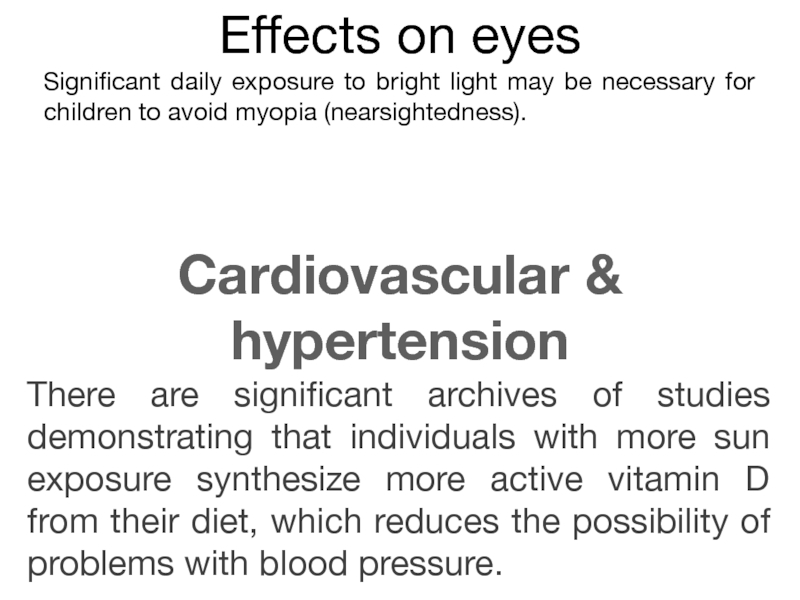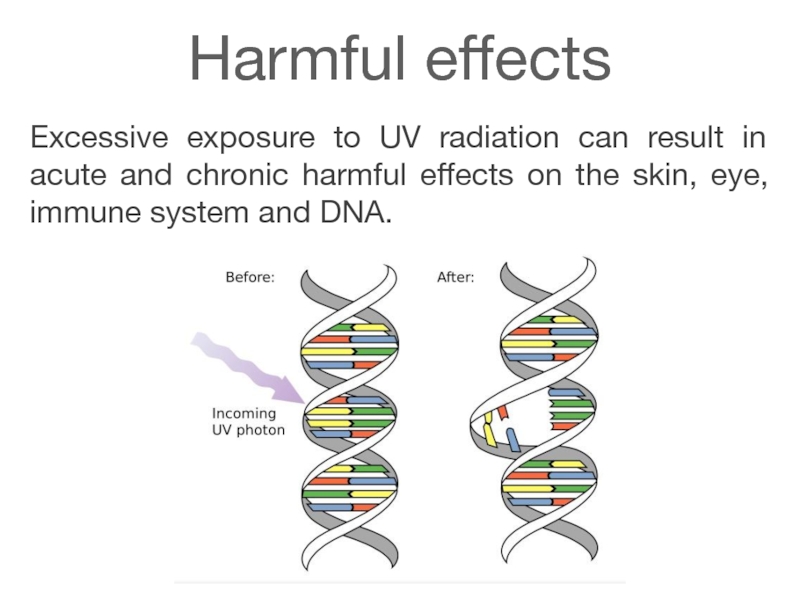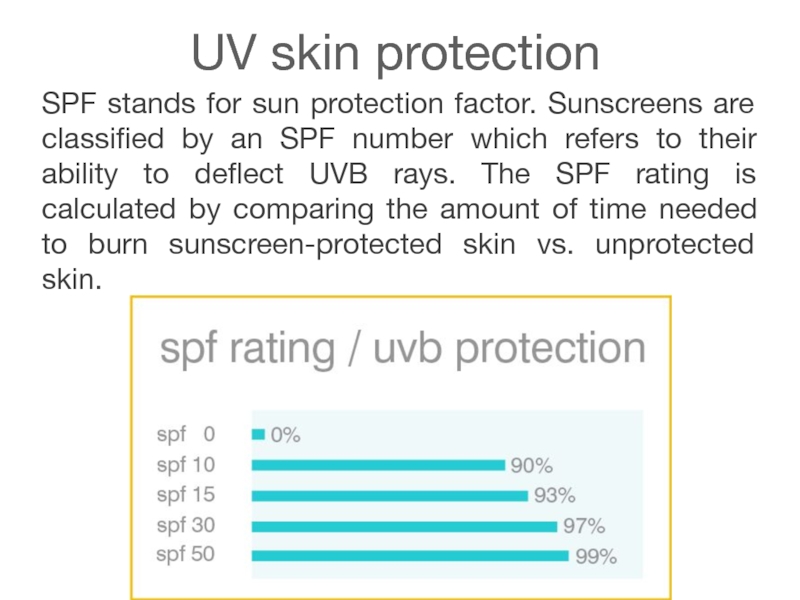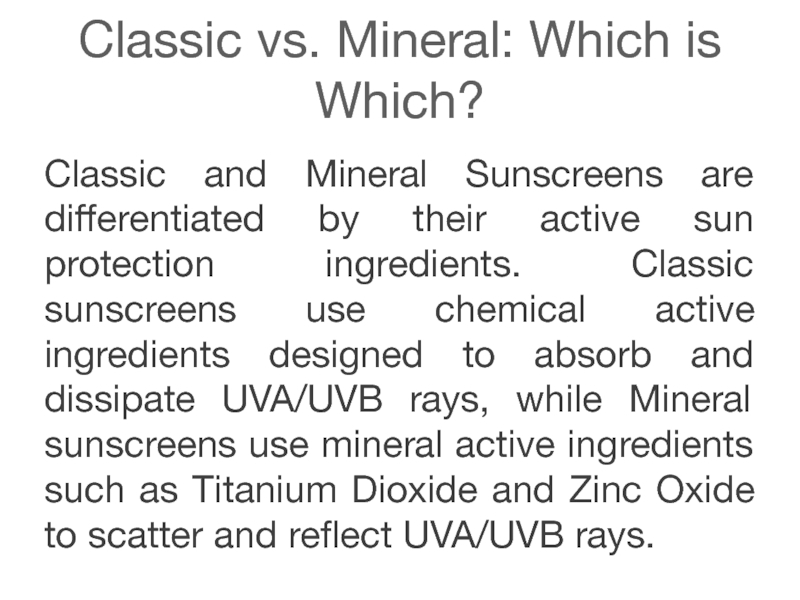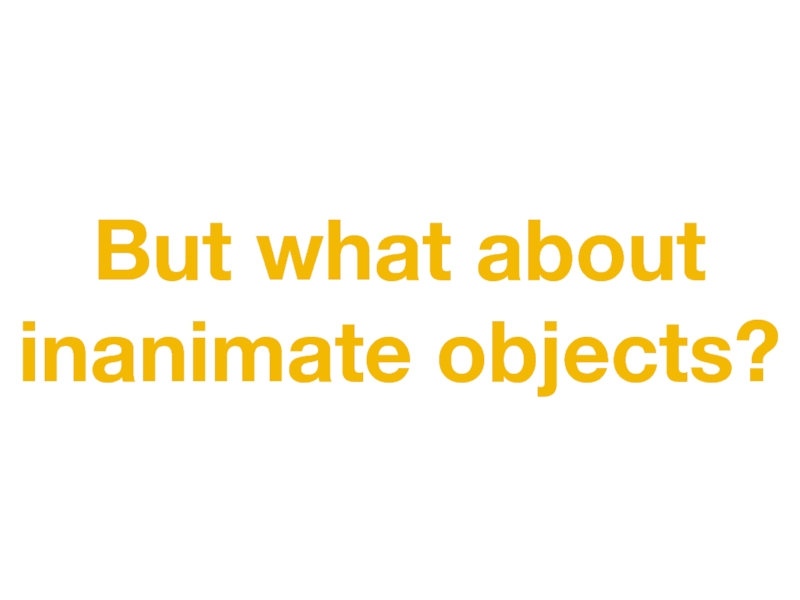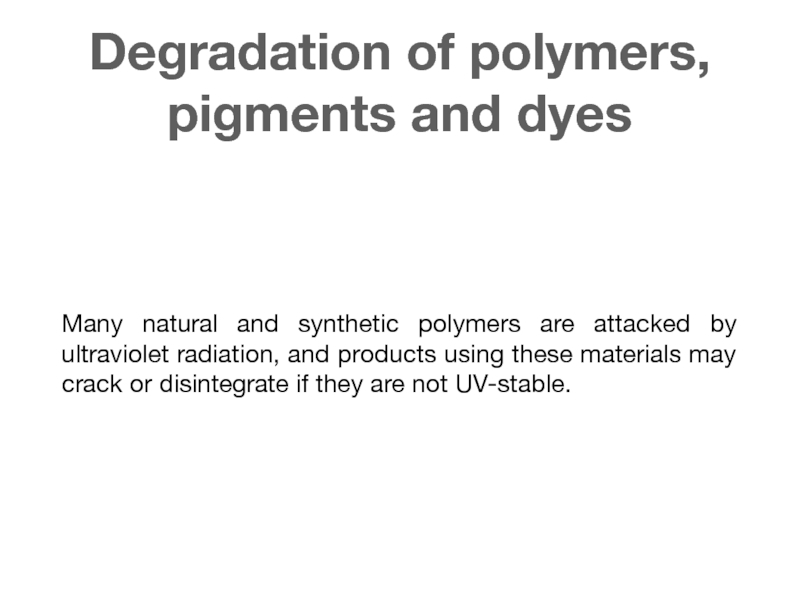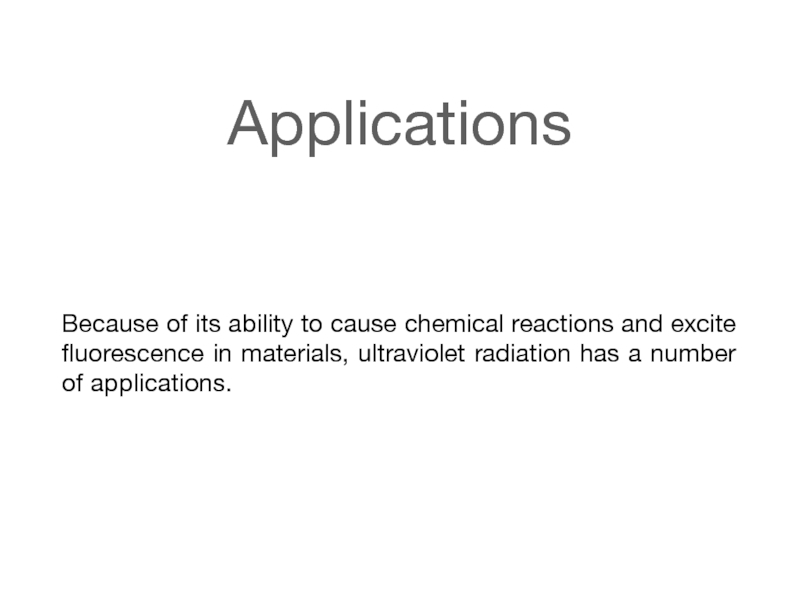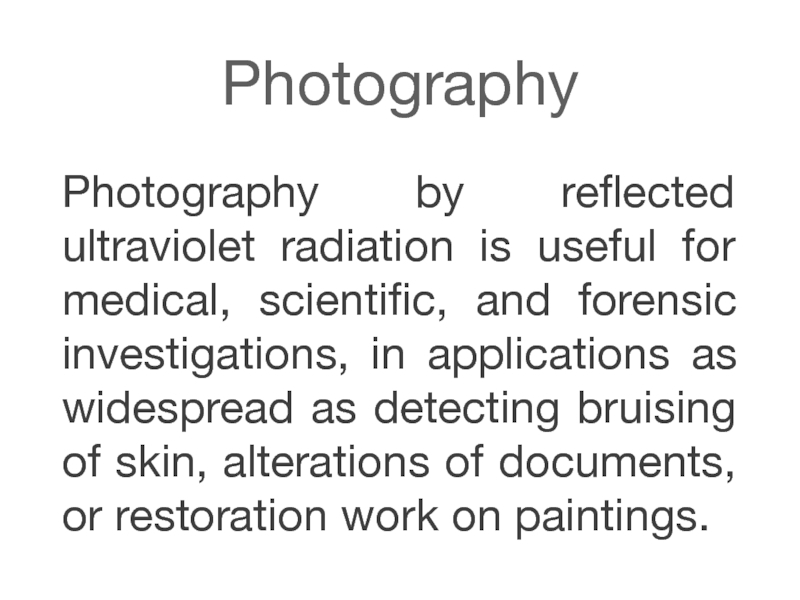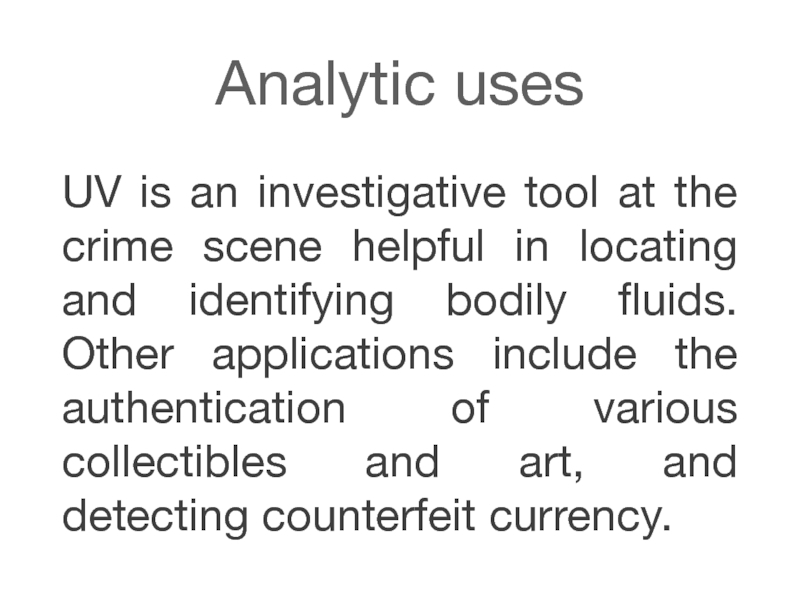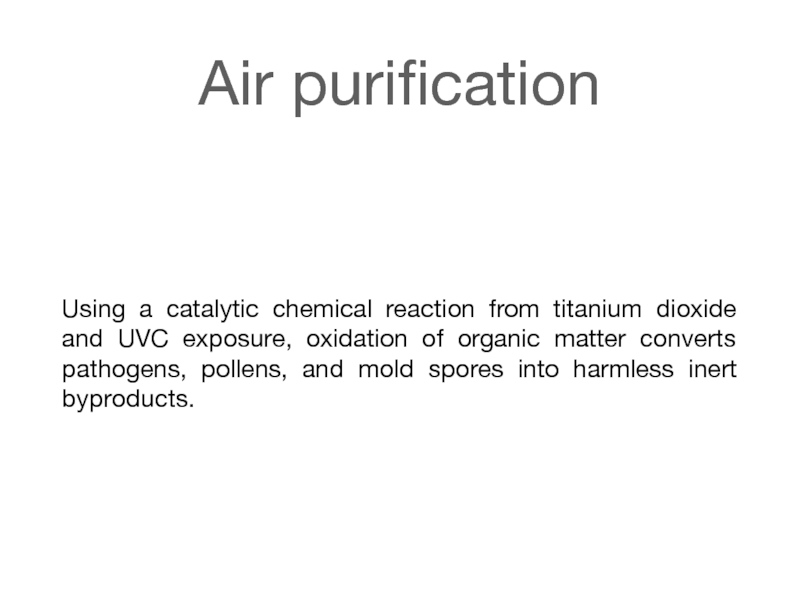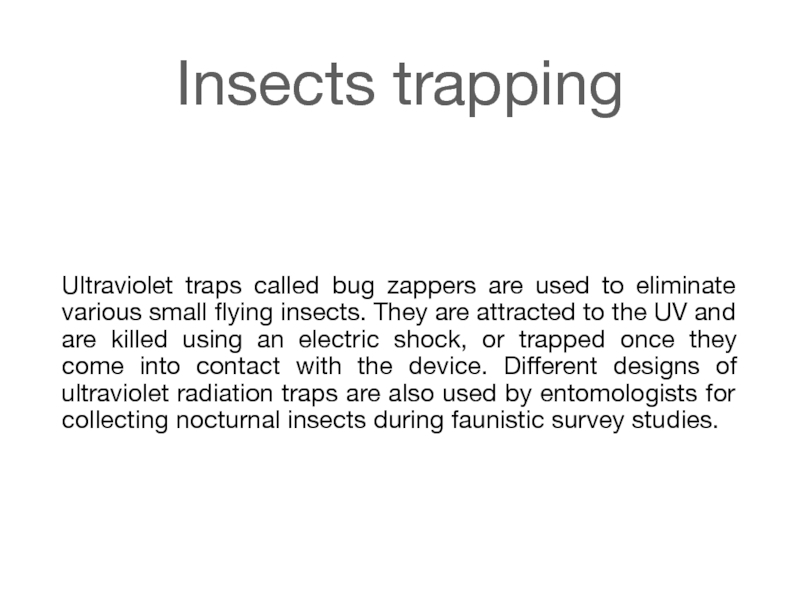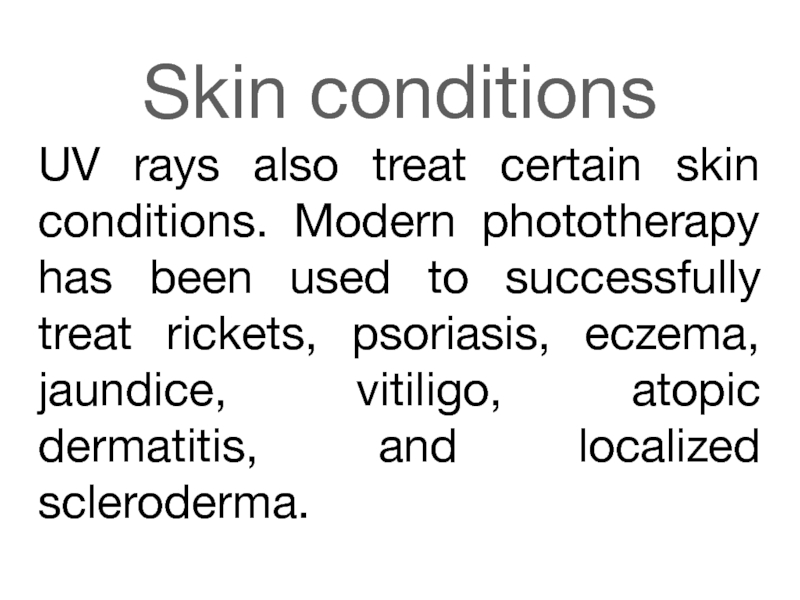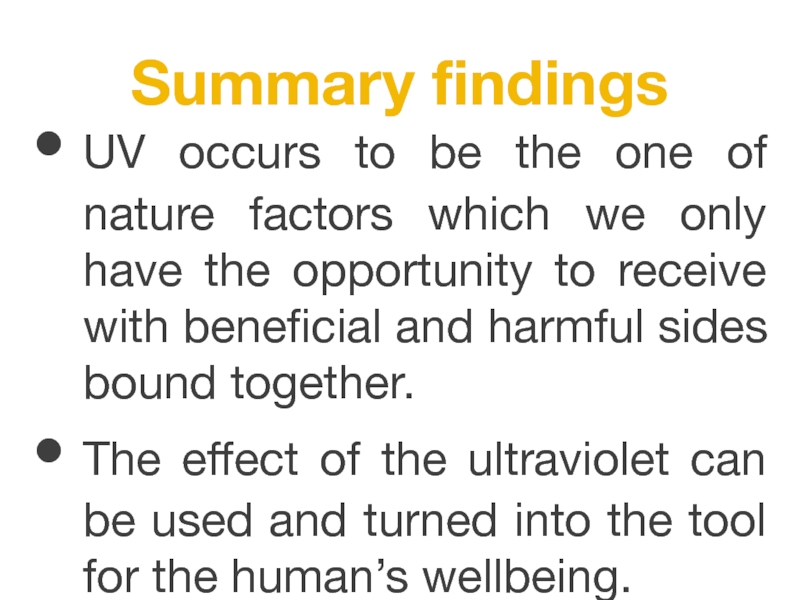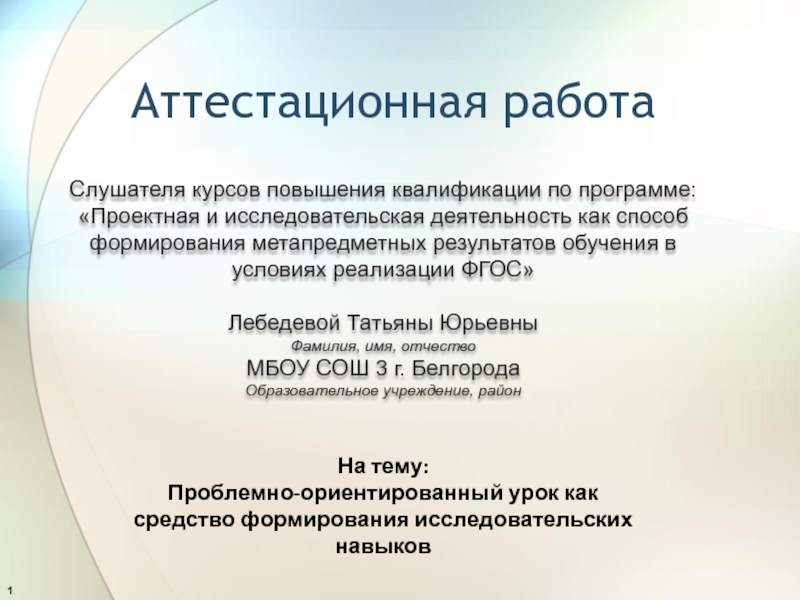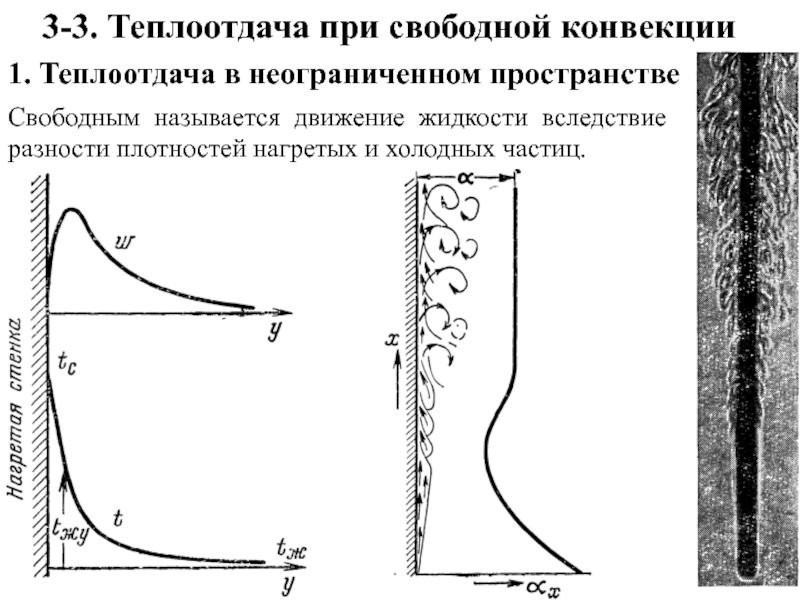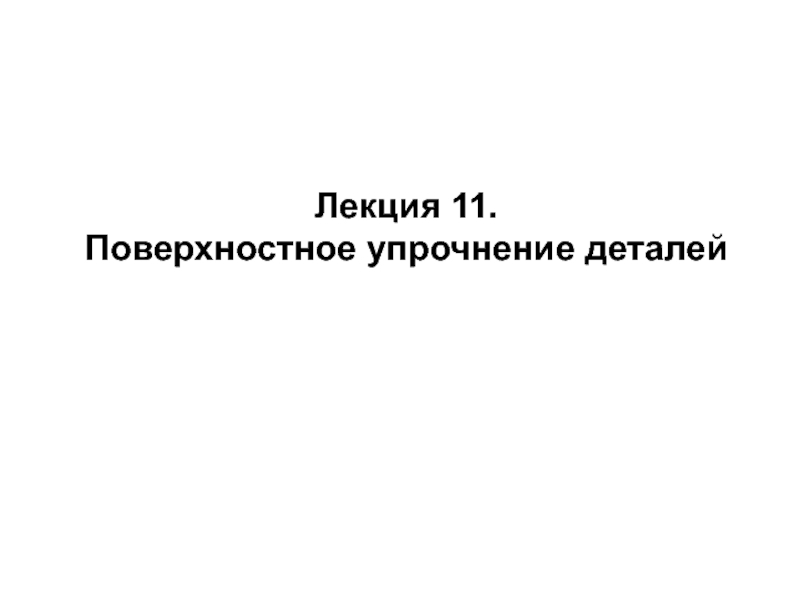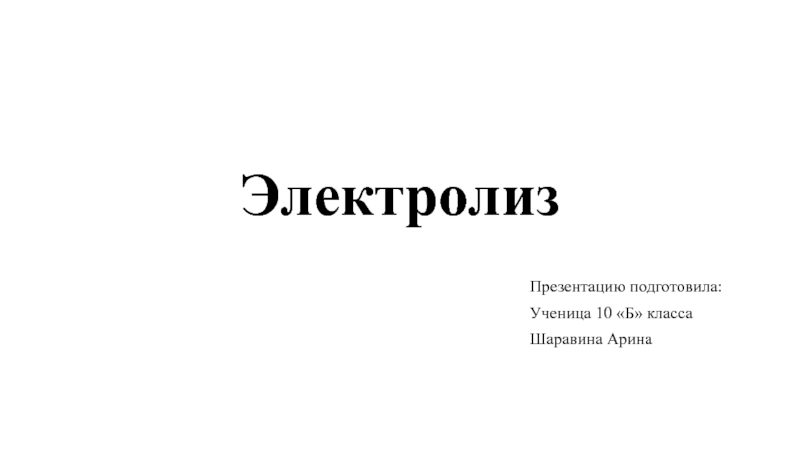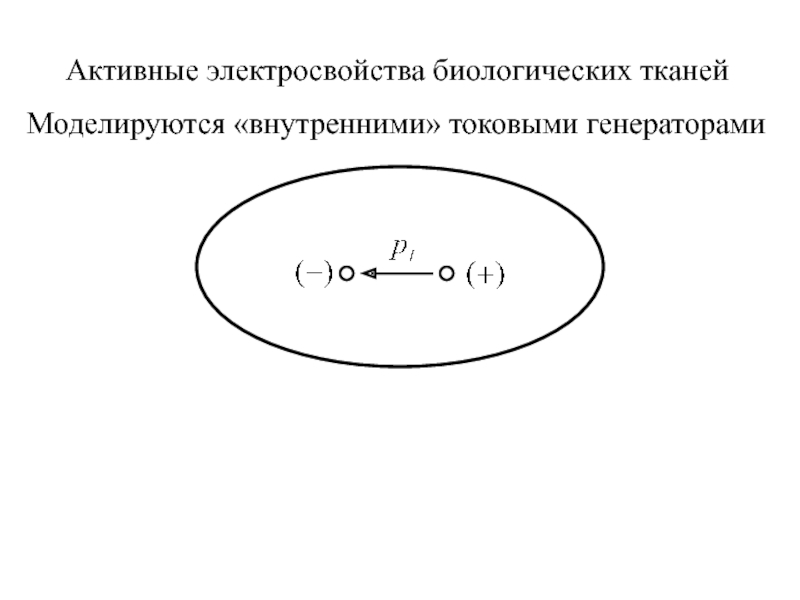- Главная
- Разное
- Дизайн
- Бизнес и предпринимательство
- Аналитика
- Образование
- Развлечения
- Красота и здоровье
- Финансы
- Государство
- Путешествия
- Спорт
- Недвижимость
- Армия
- Графика
- Культурология
- Еда и кулинария
- Лингвистика
- Английский язык
- Астрономия
- Алгебра
- Биология
- География
- Детские презентации
- Информатика
- История
- Литература
- Маркетинг
- Математика
- Медицина
- Менеджмент
- Музыка
- МХК
- Немецкий язык
- ОБЖ
- Обществознание
- Окружающий мир
- Педагогика
- Русский язык
- Технология
- Физика
- Философия
- Химия
- Шаблоны, картинки для презентаций
- Экология
- Экономика
- Юриспруденция
Ultraviolet radiation (UV) презентация
Содержание
- 1. Ultraviolet radiation (UV)
- 2. Research questions: 1.What is ultraviolet?
- 4. Meet, ultraviolet! The radiation of the Sun
- 5. Let's consider the most common types of
- 6. UVA UVA rays age skin cells and
- 7. UVB UVB rays have slightly more energy
- 8. UVC UVC rays have more energy than
- 9. What influence do UV rays have on the condition of living things?
- 10. Photosynthesis UV radiation however causes production
- 12. Health effects The ultraviolet radiation in
- 13. Beneficial outcomes The benefits of UV
- 14. Vitamin D Reasonable exposure to ultraviolet radiation
- 15. Serotonin Vitamin D promotes the creation
- 16. Melanin The amount of the brown pigment
- 17. Effects on eyes Significant daily exposure
- 18. Harmful effects Excessive exposure to UV
- 19. Skin damage All bands of UV radiation
- 20. Eye damage Prolonged optical exposure to
- 21. UV skin protection SPF stands for
- 22. Classic vs. Mineral: Which is Which? Classic
- 23. The effect of classic suntans is based
- 24. UV eye protection To decrease the
- 25. But what about inanimate objects?
- 26. Degradation of polymers, pigments and dyes Many
- 27. UV damaged polypropylene rope (left) and new rope (right)
- 28. Applications Because of its ability to
- 29. Photography Photography by reflected ultraviolet radiation
- 30. Analytic uses UV is an investigative tool
- 31. Air purification Using a catalytic chemical
- 32. Sterilization & disinfection Ultraviolet lamps are used
- 33. Insects trapping Ultraviolet traps called bug zappers
- 34. Skin conditions UV rays also treat
- 35. Summary findings UV occurs to be
- 36. Sources http://www.coolasuncare.com/sun-science/ https://www.google.ru/amp/www.sofeminine.co.uk/skin-care/uv-rays-how-do-they-work-s565165.html.amp https://www.loc.gov/rr/scitech/mysteries/colors.html https://en.wikipedia.org/wiki/Ultraviolet?wprov=sfsi1 https://www.cancer.org/cancer/skin-cancer/prevention-and-early-detection/what-is-uv-radiation.html https://www.quora.com/How-does-UV-radiation-affect-photosynthesis-in-plants http://www.sciencedirect.com/science/article/pii/S0098847209001580
Слайд 2
Research questions:
1.What is ultraviolet?
2. What are its mechanisms?
3. How does it
4. How is it presently applied by human?
Слайд 4Meet, ultraviolet!
The radiation of the Sun contains a few types of
Слайд 5Let's consider the most common types of UV:
UVA (400-315nm) rays have
UVB (315-280nm) have a medium wave length. Only its part passes through the atmosphere.
UVC (280-10nm) are considered to be the most harmful, but they do not reach the Earth’s surface because they are completely filtered by the ozone layer in the atmosphere.
Слайд 6UVA
UVA rays age skin cells and can damage their DNA. These
Слайд 7UVB
UVB rays have slightly more energy than UVA rays. They can
Слайд 8UVC
UVC rays have more energy than the other types of UV
Both UVA and UVB rays can damage skin and cause skin cancer. UVB rays are a more potent cause of at least some skin cancers, but based on what’s known today, there are no safe UV rays.
Слайд 10Photosynthesis
UV radiation however causes production of reactive oxygen species (ROS)
Слайд 12Health effects
The ultraviolet radiation in sunlight has both positive and
Слайд 13Beneficial outcomes
The benefits of UV can outweigh manageable risks. The
Слайд 14Vitamin D
Reasonable exposure to ultraviolet radiation from the sun can be
Слайд 15Serotonin
Vitamin D promotes the creation of serotonin. The production of
Слайд 16Melanin
The amount of the brown pigment melanin in the skin increases
Слайд 17Effects on eyes
Significant daily exposure to bright light may be
Cardiovascular & hypertension
There are significant archives of studies demonstrating that individuals with more sun exposure synthesize more active vitamin D from their diet, which reduces the possibility of problems with blood pressure.
Слайд 18Harmful effects
Excessive exposure to UV radiation can result in acute
Слайд 19Skin damage
All bands of UV radiation damage collagen fibers and accelerate
Слайд 20Eye damage
Prolonged optical exposure to sunlight, especially intense ultraviolet light,
Слайд 21UV skin protection
SPF stands for sun protection factor. Sunscreens are
Слайд 22Classic vs. Mineral: Which is Which?
Classic and Mineral Sunscreens are differentiated
Слайд 23The effect of classic suntans is based on chemical reactions by
Слайд 24UV eye protection
To decrease the risk of developing eye-related diseases,
Слайд 26Degradation of polymers, pigments and dyes
Many natural and synthetic polymers are
Слайд 28Applications
Because of its ability to cause chemical reactions and excite
Слайд 29Photography
Photography by reflected ultraviolet radiation is useful for medical, scientific,
Слайд 30Analytic uses
UV is an investigative tool at the crime scene helpful
Слайд 31Air purification
Using a catalytic chemical reaction from titanium dioxide and
Слайд 32Sterilization & disinfection
Ultraviolet lamps are used to sterilize workspaces and tools
Solar water disinfection has been researched for cheaply treating contaminated water using natural sunlight. The UV-A radiation and increased water temperature kill organisms in the water.
Слайд 33Insects trapping
Ultraviolet traps called bug zappers are used to eliminate various
Слайд 34Skin conditions
UV rays also treat certain skin conditions. Modern phototherapy
Слайд 35Summary findings
UV occurs to be the one of nature factors
The effect of the ultraviolet can be used and turned into the tool for the human’s wellbeing.
